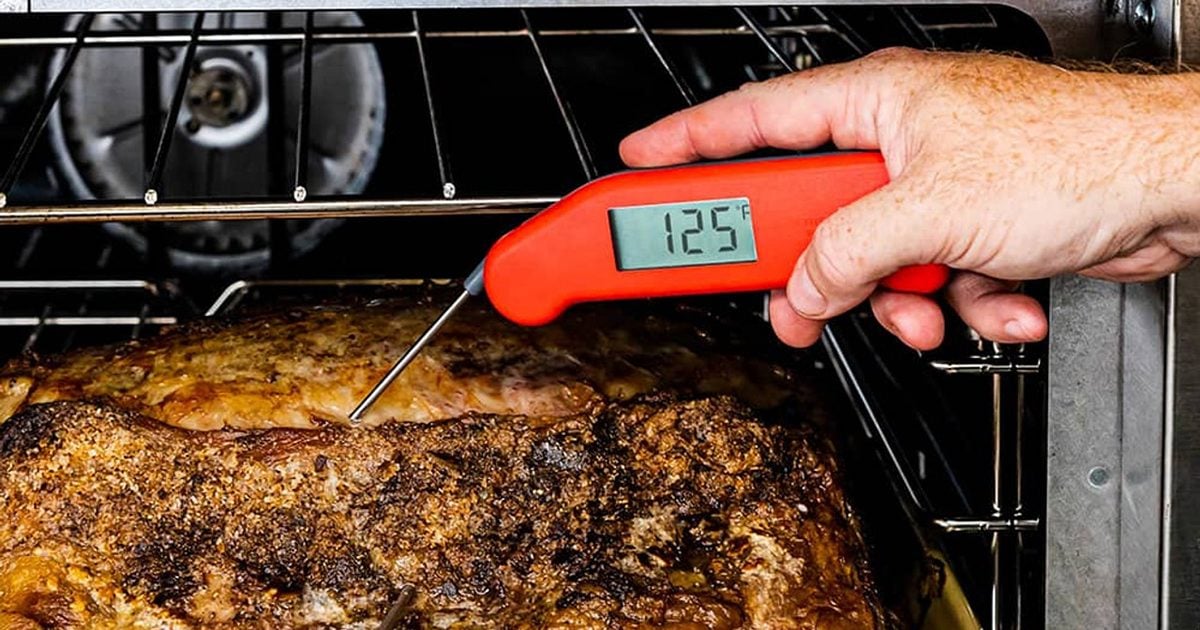Cooking meat to perfection is both an art and a science. One of the most essential tools in achieving this is a meat thermometer. By accurately measuring the internal temperature of your meat, you can ensure that it’s both safe to eat and cooked to your desired level of doneness. But, a common question arises: how far to insert meat thermometer? If you’re a chicken lover, you’ve likely asked this many times before. Here’s a comprehensive guide that delves deep into this vital cooking aspect.

Why is Inserting the Meat Thermometer Correctly Important?
Properly inserting a meat thermometer is crucial because it ensures you’re getting an accurate reading. If inserted too shallow, the thermometer might only measure the outer layer’s temperature, leading to undercooked meat. Conversely, inserting it too deep might give you a reading closer to the heat source, rather than the actual rendered meat temperature.
Additionally, correct insertion aids in achieving the desired texture and juiciness. Each type of meat, be it chicken, beef, or pork, has its optimal temperature for tenderness. Knowing how far to insert a meat thermometer can make all the difference in your cooking.

Steps to Properly Insert a Meat Thermometer
1. Choose the Right Thermometer
Select a thermometer suited for the type of meat you’re cooking. For poultry, a longer probe is typically better. Digital thermometers are often more accurate than dial ones.
2. Identify the Thickest Part of the Meat
The thickest part usually provides the most accurate reading. For chicken, this is typically the breast or the inner thigh. Avoid touching any bones, as they can skew the temperature reading.
3. Insert the Thermometer Correctly
Insert the thermometer probe into the thickest part of the meat. For a chicken, this would be about 1.5 to 2 inches deep. This ensures you’re gauging the temperature of the most insulated part of the meat.

Common Mistakes to Avoid
1. Inserting Too Shallow
If you insert the thermometer probe too shallowly, you risk measuring only the outer temperature, which can be misleading.
2. Hitting the Bone
This is a common error. Bones heat faster than meat, leading to potentially inaccurate readings. Always ensure the probe is measuring the meatiest portion.
3. Not Calibrating Your Thermometer
Regularly check and calibrate your thermometer. Over time, even the best thermometers can lose accuracy.
Temperature Guide for Various Meats
Here are some optimal temperatures for various meats:
- Chicken: 165F (75C)
- Beef Medium Rare: 135F (57C)
- Beef Medium: 145F (63C)
- Pork: 145F (63C)
- Fish: 145F (63C)
Further Reading on Meat Thermometers
For more detailed guidelines on using a meat thermometer, check out this article by Matt Preston.
FAQs
1. Why does the depth of insertion matter?
The depth ensures you’re measuring the correct internal temperature, guaranteeing both safety and desired doneness.
2. Can I use a meat thermometer for all types of meats?
Yes, meat thermometers are versatile and can be used for various meats including poultry, beef, pork, and fish.
3. How often should I calibrate my meat thermometer?
You should calibrate your thermometer regularly, ideally before each use or at least once a month, to ensure accuracy.
Make sure to visit our blog for more cooking tips and techniques.
As an Amazon Associate, I earn from qualifying purchases.









